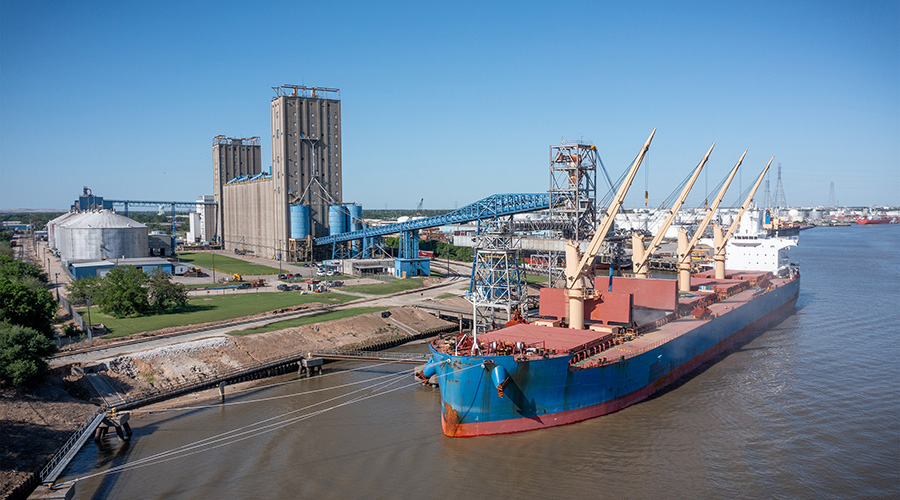Operations at Oregon's only international container terminal to come to an end in October
4/25/2024
By Jeff Stagl, Managing Editor
A dark day is looming on the horizon for the Port of Portland. On Oct. 1, the port plans to cease international container service at Terminal 6, Oregon’s only international container terminal.
The 419-acre terminal features five ship berths and an on-dock rail yard with eight tracks.
Port leaders were unable to nail down a financially sustainable solution for maintaining container operations in both the short and long terms. They had been pursuing a third-party operator lease arrangement over the past year.
However, the third-party operator ended negotiations suddenly, leaving the port with no other option than to end container service, said port spokesperson Kara Hansen in an email.
Container operations at Terminal 6 generate $20 million annually in tax revenue for the state and provide 1,500 jobs in international cargo operations. But for now, the terminal’s container operations will only continue to be funded over the next several months to provide time for a transition.
The third-party lease was the key to keeping the container business open, as well as the rationale for the port’s funding request with the Oregon Legislature, wrote Keith Leavitt, the port’s chief trade and economic development officer, in a letter to stakeholders.
“Obviously, we did not expect this outcome, but it’s important we face it quickly given contract considerations with carriers,” he wrote. “While this is a painful and necessary short-term decision, we learned a lot over the last year regarding the market, carrier interest and the overall economic importance of Oregon’s only container terminal.”
Although cargo volumes have steadily increased since 2019, the port has endured losses of more than $30 million from container operations over the past three years, including a projected $14 million shortfall in the current fiscal year. Port leaders have been seeking state support as a bridge to a more sustainable long-term financial model.
 In 2022, BNSF ended intermodal operations between Portland and Seattle/Tacoma at Terminal 6. Port of Portland
In 2022, BNSF ended intermodal operations between Portland and Seattle/Tacoma at Terminal 6. Port of PortlandIn 2023, the port handled 116,063 containers (measured as 20-foot equivalent units) versus 171,481 in 2022, 105,989 in 2021 and 58,066 in 2020.
Terminal 6 faces a number of challenges, including its distance from the Pacific Ocean at 100 miles; the region’s relatively small consumer market compared to other West Coast cities such as Los Angeles and Seattle; and the Columbia River’s limited depth to accommodate the shipping industry’s largest vessels.
In addition, BNSF Railway Co. ended intermodal operations between Portland and Seattle/Tacoma at Terminal 6 in 2022, eliminating a sustainable revenue stream, Port of Portland officials say. Union Pacific Railroad also serves Terminal 6, but to date has not proposed becoming involved in a container operation solution, according to the port.
Terminal 6 also features a thriving automobile import and export business, and can handle breakbulk and other large, heavy cargo, port officials say. In 2023, the port handled 300,683 autos compared with 244,934 in 2022 and 246,606 in 2021.
 After Oct. 1, Terminal 6 will continue to handle imported and exported autos, as well as breakbulk and other large, heavy cargo. Port of Portland
After Oct. 1, Terminal 6 will continue to handle imported and exported autos, as well as breakbulk and other large, heavy cargo. Port of Portland“It’s important to note that after Oct. 1, Terminal 6 will remain a working marine shipping terminal,” said Hansen. “There is a lot of cargo handled there ... that requires a lot of space to ship. Both the autos and breakbulk businesses provide jobs and labor partnerships at the terminal.”
In the meantime, port leaders plan to remain focused on partnering with shippers, workers, elected officials and community members to help support ways to transport Oregon goods to markets.
“We know that this terminal is a critical statewide asset — it is worthy of further discussions to come up with a financially sustainable business model for container service that has significantly more state funding and investment,” said Leavitt.

